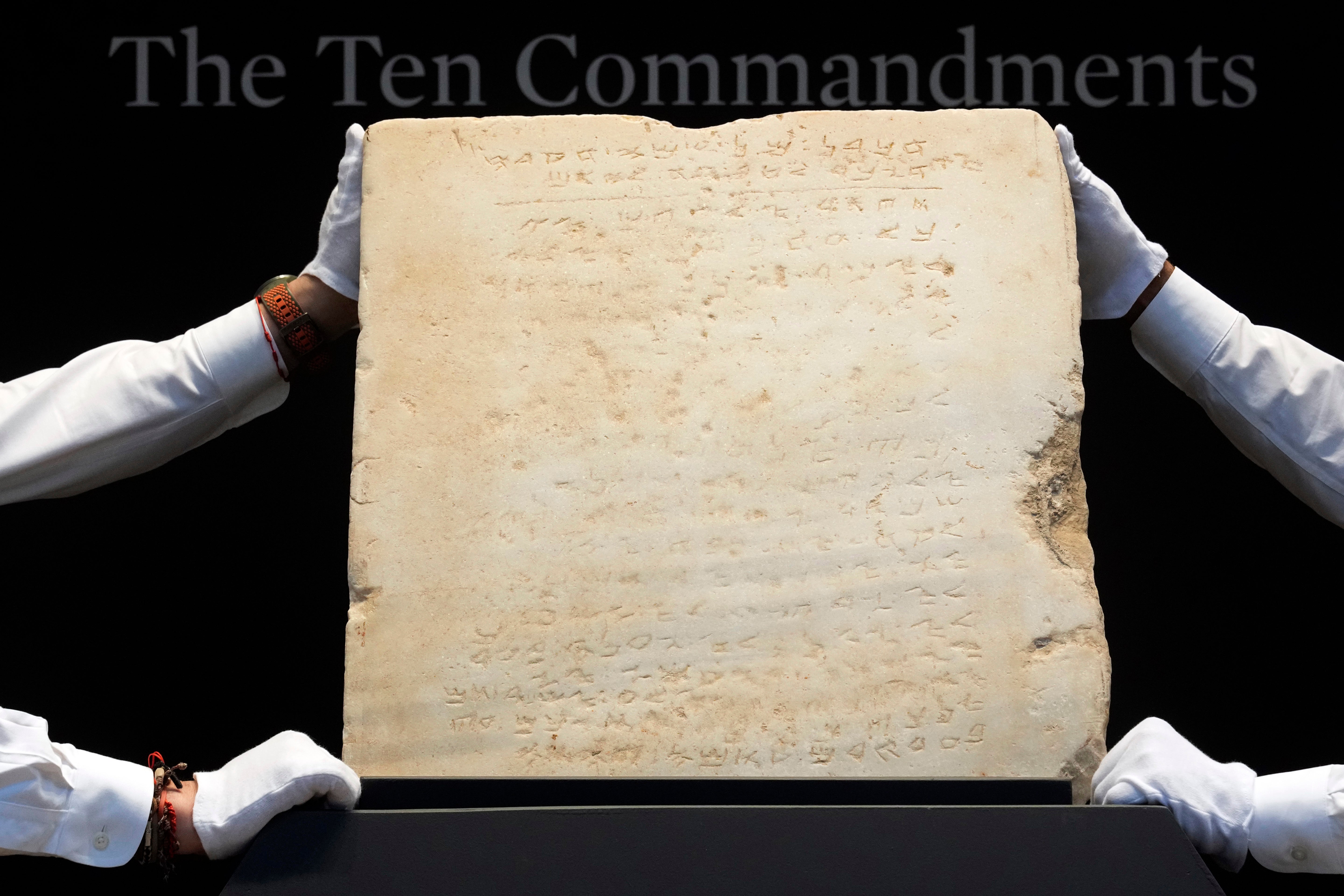Mysterious tablet with oldest engraving of Ten Commandments from 1,700-years-ago sells for $5MILLION – but is it real?
Share:
An ancient stone tablet with the world’s oldest engraving of the Ten Commandments, from 1,700 years ago, has sold for £4 million at auction. An anonymous bidder bought the ancient relic at Sotheby’s, New York, for the eye-watering sum despite there being doubts about its authenticity.
![[Sotheby’s workers hold the marble slab, touted as the oldest version of the Ten Commandments known]](https://www.thesun.co.uk/wp-content/uploads/2024/11/oldest-inscribed-tablet-ten-commandments-948873955.jpg?strip=all&w=960)
You shall have no other gods before Me. You shall not make idols. You shall not take the name of the LORD your God in vain. Remember the Sabbath day, to keep it holy. Honor your father and your mother. You shall not murder. You shall not commit adultery. You shall not steal.
![[The stone slab engraved with Ten Commandments weighs 52kg]](https://www.thesun.co.uk/wp-content/uploads/2024/12/slab-smaller.jpg?strip=all&w=729)
You shall not bear false witness against your neighbour. You shall not covet. The auction house did not claim the artefact was the original ten commandments stone, written about in the Bible, but did say it was the oldest still in existence, dating back to between 300 and 800 AD.
However, some experts have raised doubts that the tablet really is as old as claimed. Christopher Rollston, a classical civilizations academic at George Washington University, said the stone “may or may not be ancient”. He said: “Sotheby’s has not done its due diligence with this piece, and I find that to be deeply problematic”.
Rollston says that Sotheby’s is relying on the wear and tear to prove the engraving is ancient, but that this could have been caused by its use as a paving slab for 30 years. He also suggested that an unusual feature of the artifact - the third commandment is different from the traditional one - could be a piece of deliberate “surprising content” included by forgers to create interest in the item.






















